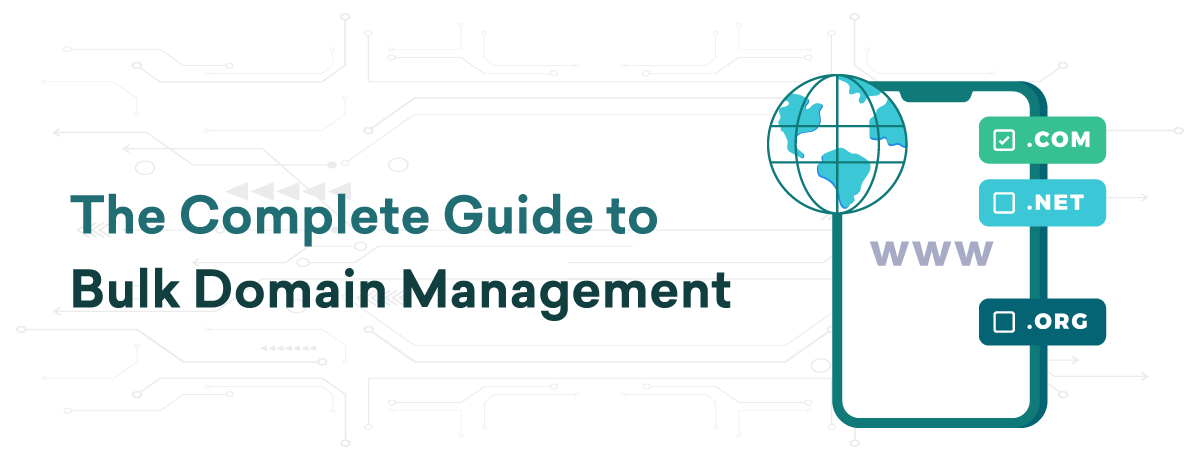Managing multiple domains can be a complex and time-consuming task. Bulk domain management streamlines the process, saving you time and effort while ensuring consistency across all your domains. Here are some essential tasks you should consider managing in bulk:
Table of Contents
1. Domain Registration and Renewals
Registering and renewing domains in bulk is a significant time-saver. Instead of handling each domain individually, bulk actions allow you to register or renew multiple domains simultaneously. This approach is especially useful for businesses and individuals managing large portfolios, helping to avoid the risk of domains expiring and becoming unavailable.
2. DNS Management
DNS settings are crucial for directing your domain traffic to the correct web servers. Managing DNS records in bulk ensures that all your domains have consistent and correct settings. This can include updating A records, CNAMEs, MX records, and other DNS configurations across multiple domains, which helps in maintaining site availability and performance.
3. WHOIS Information Updates
Keeping your WHOIS information up to date is essential for compliance and communication. Bulk updates allow you to change contact information, such as email addresses, phone numbers, and mailing addresses, across all your domains at once. This ensures that your contact details are accurate and consistent, which is vital for domain verification and renewal notices.
4. Domain Locking
Domain locking prevents unauthorised transfers of your domains. By applying this security measure in bulk, you can safeguard all your domains simultaneously, reducing the risk of theft or accidental transfers. Ensuring that all your domains are locked is a critical step in maintaining domain security.
5. Name Server Changes
Changing name servers in bulk is essential when you are migrating your domains to an affordable web hosting provider or DNS service. This process ensures that all your domains point to the correct name servers without the need to update each domain individually, streamlining the transition and minimising downtime.
6. Email Forwarding
For businesses managing multiple domains, setting up email forwarding in bulk can ensure that emails sent to any domain in your portfolio are directed to a central inbox. This helps in managing communications efficiently and ensures that no important messages are missed.
7. SSL Certificate Management
SSL certificates are vital for securing your websites. Managing SSL certificates in bulk allows you to purchase, install, and renew certificates for multiple domains at once. This not only saves time but also ensures that all your domains are protected and compliant with security standards.
8. Subdomain Creation
If you use subdomains for different sections of your website or for different services, creating and managing these in bulk can save significant time. This approach ensures consistency in the structure and management of your subdomains, making it easier to maintain and update them as needed.
9. Automated Reporting
Set up automated reports for your domain portfolio to keep track of renewals, expirations, DNS settings, and other critical information. This allows you to monitor the status of your domains without manually checking each one, ensuring you stay informed about any necessary actions.
10. Bulk Transfer
Transferring domains between registrars can be cumbersome. Bulk transfer simplifies this process, allowing you to move multiple domains at once, ensuring a smooth transition with minimal downtime and administrative effort.
Conclusion
Bulk domain management is essential for efficiently handling large domain portfolios. By performing tasks such as registration, DNS management, WHOIS updates, and SSL certificate management in bulk, you can save time, ensure consistency, and enhance the security of your domains. Adopting bulk management practices allows you to focus on strategic initiatives while maintaining control over your domain assets.



